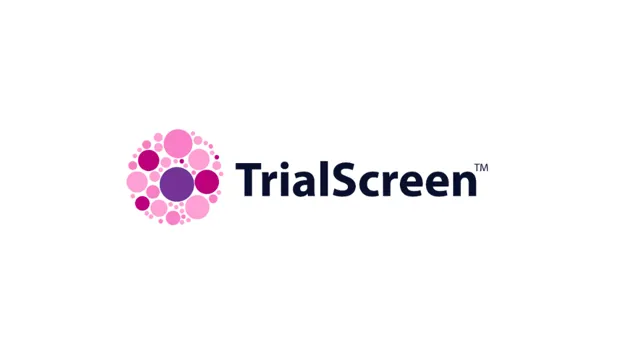Pancreatic cancer Clinical Trials

What are clinical trials?
Clinical trials are an important part of medical research that evaluate the safety, effectiveness and side effects of new treatments, interventions or tests.
Without the clinical trial phase of medical research, new treatments could not be determined as safe or effective for patients.
Some of the common reasons for conducting clinical trials include:
- evaluating experimental drugs, medical devices, delivery methods and surgical procedures
- development of prevention therapies like vaccines, medicines or lifestyle changes
- evaluating new diagnostics and screening methods
- testing new health service changes
Phases of clinical trials
Clinical trials to test medical interventions are typically conducted through four phases.
Phase I clinical trials test the intervention, like a new drug, in a small group (20 to 80) of people to mainly evaluate its safety and look for early indications that the intervention is working. This will include things like correct dosage and immediate side effects.
Phase II clinical trials then study the intervention in a larger group of people (more than 100) to further evaluate its safety and efficacy (whether or not it has worked how it should).
Phase III clinical trials compare the new intervention to current treatments to further evaluate efficacy and safety in a larger group of patients. Once an intervention passes a phase 3 trial and is approved by regulators - the Therapeutic Goods Administration in Australia, the intervention can be sold and prescribed for use outside of clinical trials.
Phase IV clinical trials are conducted after a drug or device has been released to the market for public use. It is often called “post-marketing surveillance”. Phase 4 trials monitor the effectiveness and possible side effects in a general population over longer periods. At this point, phase 4 trials can also be used to determine if the intervention is suitable for the treatment of other conditions. These trials involve thousands of people, and often from all around the world.
Why taking part?
Your doctor may suggest that you take part in a clinical trial. It is important you understand the reasons for the trial and what it means for you. Clinical trials may be beneficial because you will:
- have access to a potentially helpful treatment that isn’t yet available as standard treatment
- get regular support and follow-up with doctors and nurses who are experts in their field
- be contributing to research that may help save lives in the future
feel you are taking an active role in your treatment and care.
Not everyone is eligible for all clinical trials. If your doctor thinks you might be suitable for a certain trial, they will ask you to speak with the trial coordinator/nurse who will explain the trial in detail.
- Which treatments are being tested and why?
- How long will the trial last?
- What are the possible side effects of the new treatment?
- Do I have to go into hospital to be on the trial?
- What are my goals and what do I expect if I decide to take part? How realistic are these?
- What are the benefits and risks of participating in this clinical trial?
- How will I be cared for during the clinical trial?
- What are my responsibilities during the clinical trial?
- Are there any costs associated with my participation in a clinical trial?

Clinical Trial Finder
To help you find actively recruiting pancreatic cancer clinical trials, you can visit Australian Clinical Trials.
We have also partnered with TrialScreen.org,a free clinical trial search engine in Australia and around the globe.
FAQ
To conduct a clinical trial, researchers must first prove their intervention could have the potential to help patients through preclinical testing. Preclinical testing includes basic biological research, and testing in cells, known as in vitro research. If required, the intervention will then be tested in vivo (in animal models) before being given to humans in a clinical trial. Researchers will then monitor the health effects the intervention has on the trial participants over a set amount of time.
Clinical trials are vital to demonstrating that potential new treatments are safe and effective therapies. Being a volunteer in a clinical study is incredibly important as all humans react in diverse ways to medical treatments. Participating in a clinical trial can also be extremely beneficial to patients. Patients who are involved in clinical trials report better health outcomes and may have access to new treatments that may be effective (1). However, it is important to note that participating in a clinical trial may or may not treat your cancer more effectively than standard treatment, it is completely voluntary to participate, and you can withdraw from a trial at any time. The data obtained from the trial will help researchers develop new treatments in the future.
During clinical trials, researchers need to understand exactly how patients respond to treatments. To do this, they usually compare the new intervention to a control. A control can either be a placebo (something containing no medication) or an established intervention that is already in use. Controls help researchers to assess their intervention accurately. Placebos are rarely used in trials to test new cancer interventions unless there is no standard treatment. Most of the time cancer trials use the best current treatment plus the new drug or without the new drug so patients always receive the best know treatment when they are on a clinical trial. A committee of people review the proposed control to ensure that it is an ethical option for treatment.
Before you agree to participate in a clinical trial you will be told whether the trial you are interested in joining uses placebos. Once you agree to participate in the trial you will randomly be assigned to receive the new intervention, or the control. This is called randomisation and is usually done by a computer.
Often trials are ‘blinded’ which means that the participants and or researchers do not know who is receiving the new intervention. To ensure more accurate results, you will not know whether you are receiving the control or new intervention. In what are called ‘double-blinded’ trials, neither the research organisation running the trial nor the participant know who is receiving the new intervention. The data is recorded in such a way that after the trial finishes or if there is a health emergency during the trial, your doctor can find out if you are on the new intervention or not.
(1) Krzyzanowska MK, Kaplan R, Sullivan R. How may clinical research improve healthcare outcomes? - Annals of Oncology Ann Oncol 2011; 22: vii10‐vii15.
